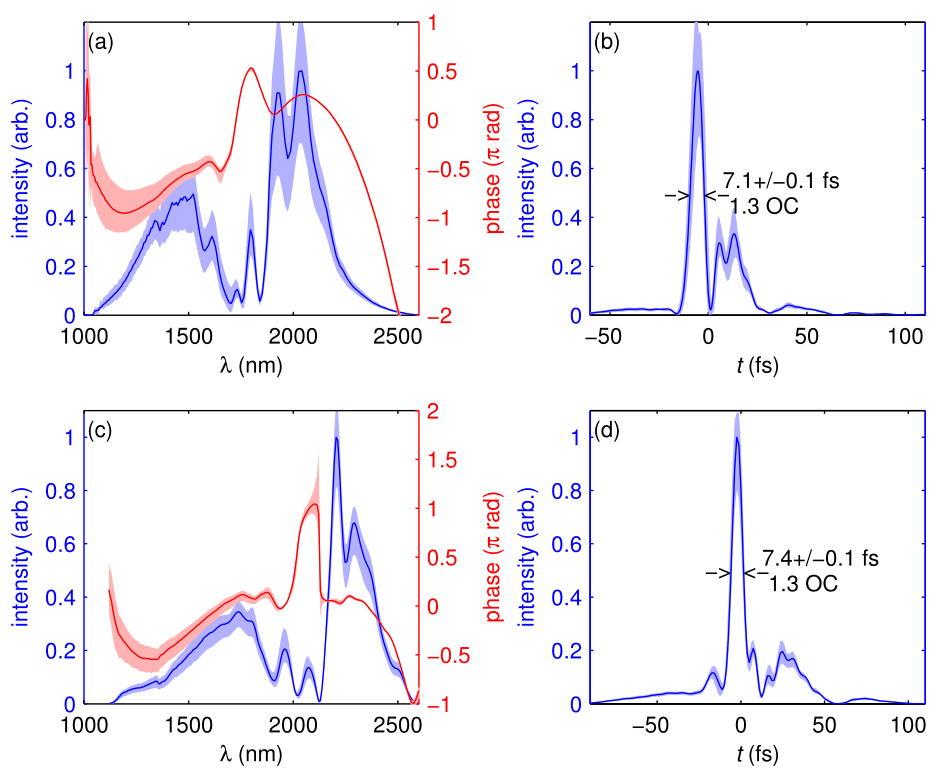Spatio-temporal characterization of few-cycle long wavelength pulses
As with all forms of spectral shearing interferometry, SEA-F-SPIDER involves two frequency shifted replicas of the unknown pulse. In SEA-F-SPIDER, the replicas are created by mixing the unknown pulse with narrowband ancillae, produced by passing another pulse through interferometric band-pass filters, which can be angle tuned. The upconverted beams are crossed on the entrance slit of an imaging spectrometer, producing interference fringes. The tilt of the interference fringes is proportional to the group delay. The following animation illustrates the concept, measuring a positively chirped test pulse.

The results were excellent. In terms of optical cycles, our retrieved pulses were among the shortest ever generated.

A major advantage of spatially encoded arrangement (SEA-) SPIDER is that it returns the temporal profile along a 1 dimensional spatial slice of the beam. This enables pulse-front distortions to be identified. We demonstrated this by deliberately preparing a few-cycle pulse with a tilt in the focus.
